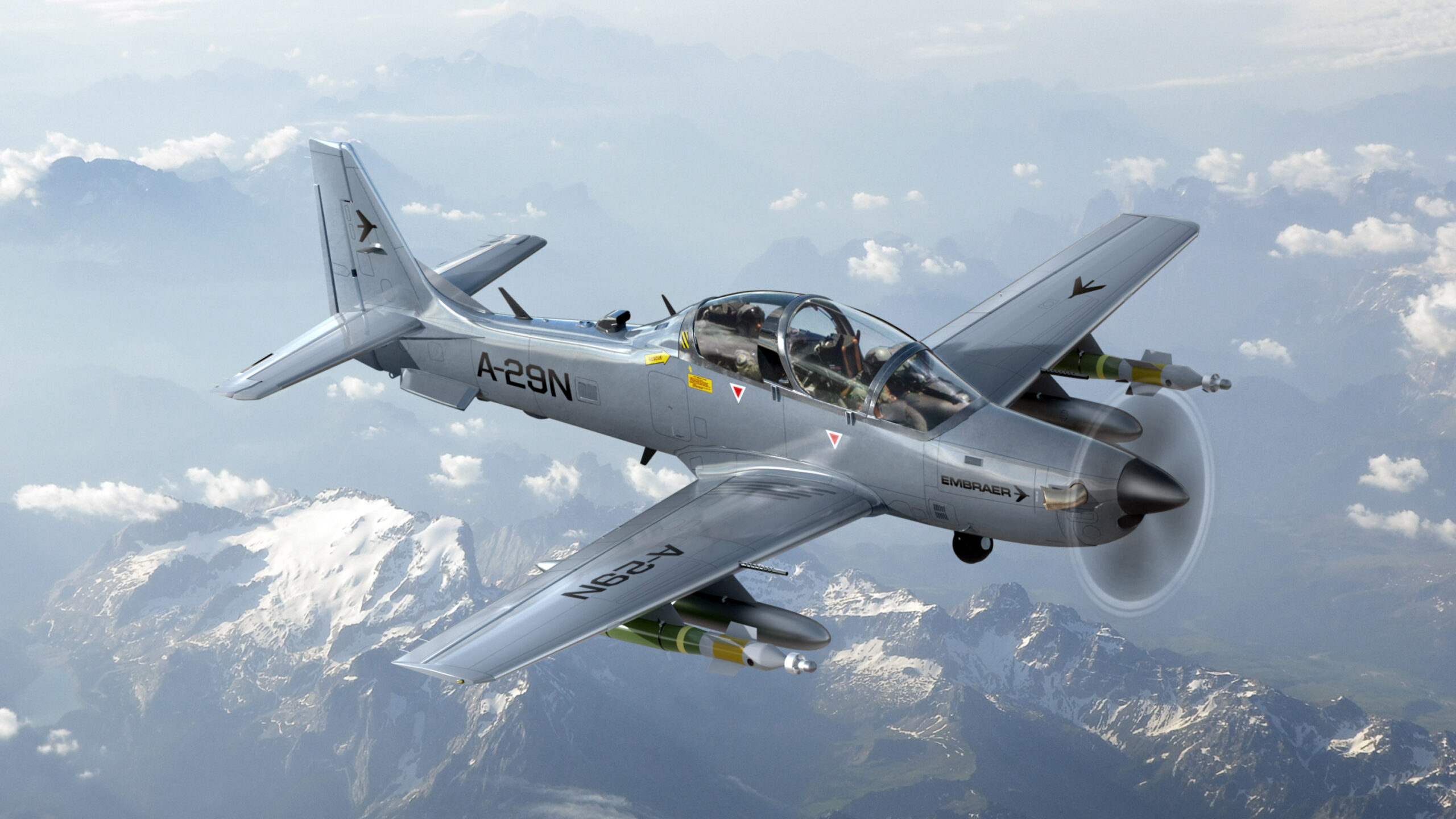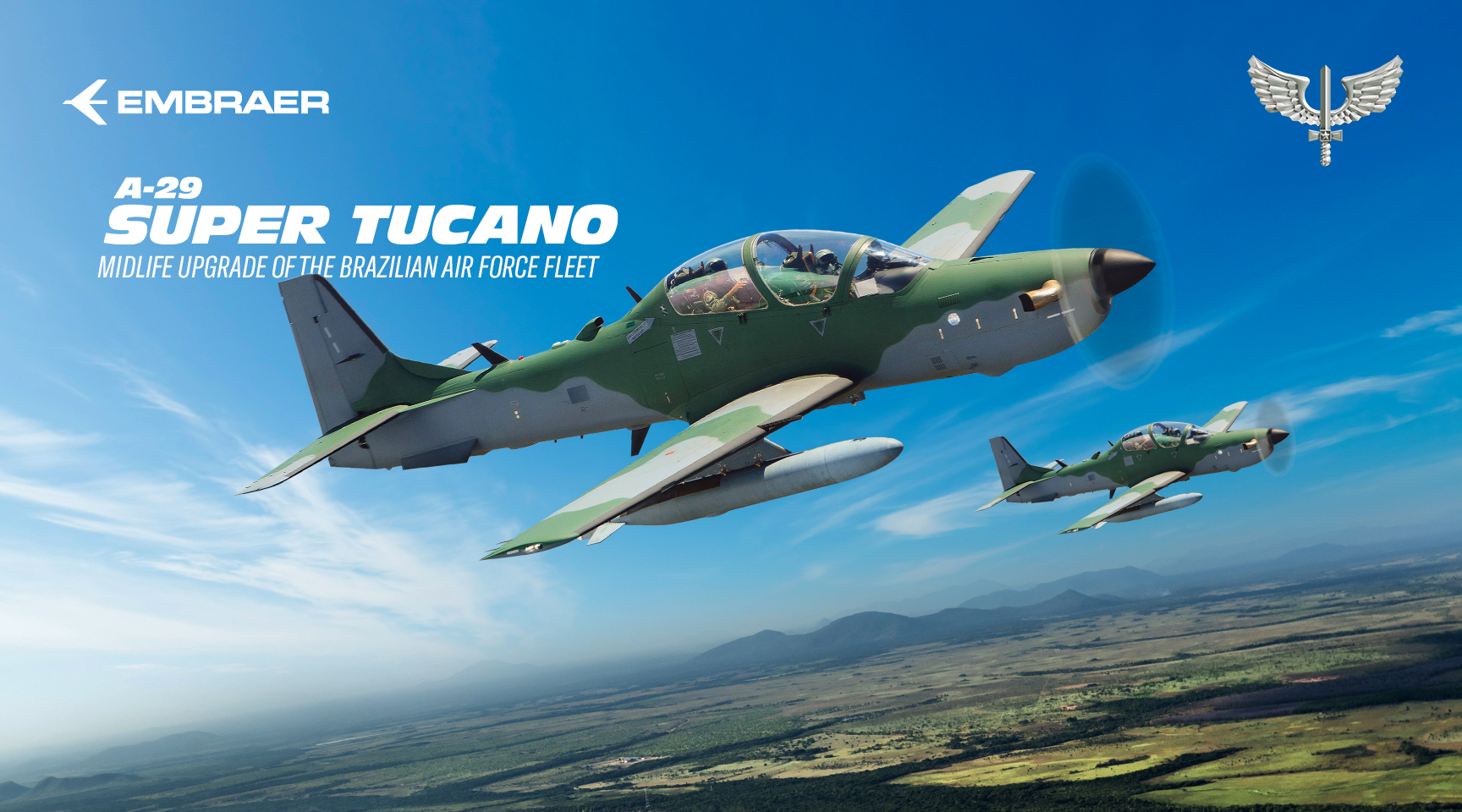Embraer to modernize Brazilian Air Force Super Tucano fleet
The Brazilian Air Force has reached an agreement with Embraer to carry out the mid-life modernization (MLU) of its fleet of 68 A-29A/B Super Tucano aircrafts.
During the 54th edition of the International Paris Air Show, the Brazilian Air Force (FAB) and Embraer had announced the start of studies for the mid-life modernization (MLU) of the A-29 Super Tucano aircraft. The upgrade would focus on implementing a fifth-generation avionics system with scalability, upgrading the navigation and communication systems, expanding the available weapons systems and modernizing the aircraft’s surveillance and self-protection sensors.
A-29 Super Tucano MLU
Although the A-29 is a relatively young aircraft (the first examples entered service with the FAB in 2004) and has avionics and equipment analogous to those of a fourth-generation fighter, the Mid-Life Modernization (MLU) package proposed by Embraer aims to add some fifth-generation combat technologies, increasing operational flexibility and systems modularity.
According to the specialized site Tecnologia & Defesa, the modernization of the FAB’s Super Tucano will include a larger package for the A-29s equipping squadrons focused on operational missions (such as light attack, air surveillance and interdiction, and counterinsurgency) and a simpler one for those used to train fighter pilots.

The upgrade could include the complete renovation of the cockpit with the installation of the Wide Area Display (WAD), the Head-up Display (HUD) and the Helmet Mounted Display produced locally by AEL Sistemas for the F-39 Gipen program. The communication systems will also be upgraded, with the possibility of including a high-speed data link. ISR capability will be boosted, also self-defense systems would be improved with the installation of chaff/flare dispensers and the range of guided weapons that the aircraft can use would be expanded.
As an advanced trainer, which has to guarantee a correct transition to the 4.5 generation fighters (such as the Gripen) and to the 5th generation (thinking about the development of the A-29N for NATO), the modernized aircraft for the FAB could adopt the same synthetic training package installed in the Super Tucanos operated by Chile and Ecuador.

These synthetic training systems simulate the use of radar, electronic warfare systems and air-to-air and air-to-ground missiles, among other capabilities, allowing the pilot to train in modern and complex combat tactics, but at a fraction of the operational cost.

/https://aviacionlinecdn.eleco.com.ar/media/2020/08/Super-Tucano.jpg)

Para comentar, debés estar registradoPor favor, iniciá sesión